Constructivism Midterm
1/81
There's no tags or description
Looks like no tags are added yet.
Name | Mastery | Learn | Test | Matching | Spaced |
|---|
No study sessions yet.
82 Terms
The Wanderers
Members of Mamotov’s Circle
Focus on Russian folk art
Relationship between life and art
Inspired many future avant-garde artists
Lubok prints
Prints intended for Russian serfs
Often referenced by later avant-garde artists
Religious
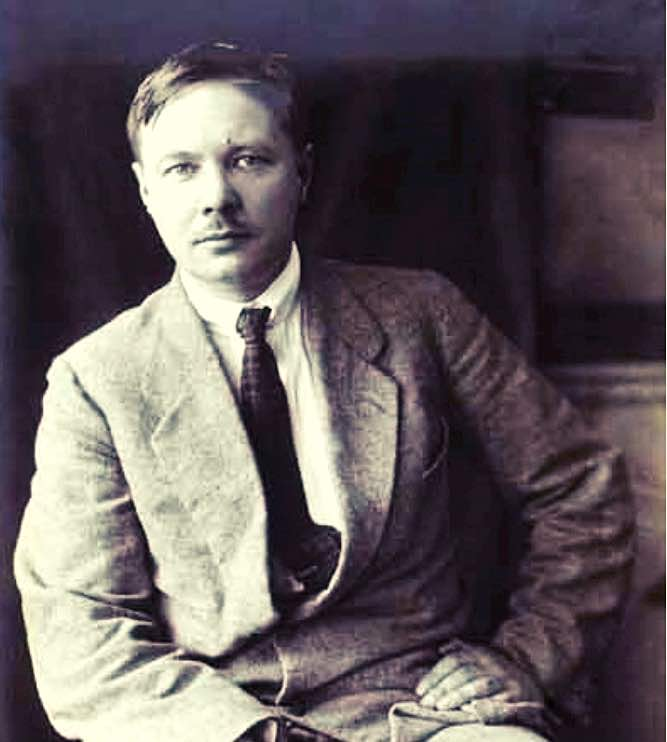
Mikhail Larionov
Founder of Rayonism
Attended the Moscow School of Art where he met Goncharova
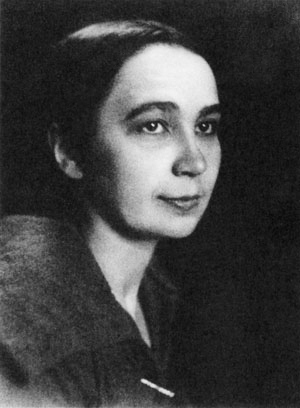
Natalia Goncharova
Founder of Rayonism
Attended the Moscow School of Art where she met Larionov
Born from a noble background
Adopted a “Wanderers” aesthetic
Rayonism
Founded by Larionov and Goncharova
Focused on movement outside of the blank canvas
Very short movement
Futurism
Romanticization of violence/war
Erasure of past with focus on the future
Liberation from tradition
Enlistment in the war that often resulted in their own deaths
Museums as “mausoleums to dead ideas”
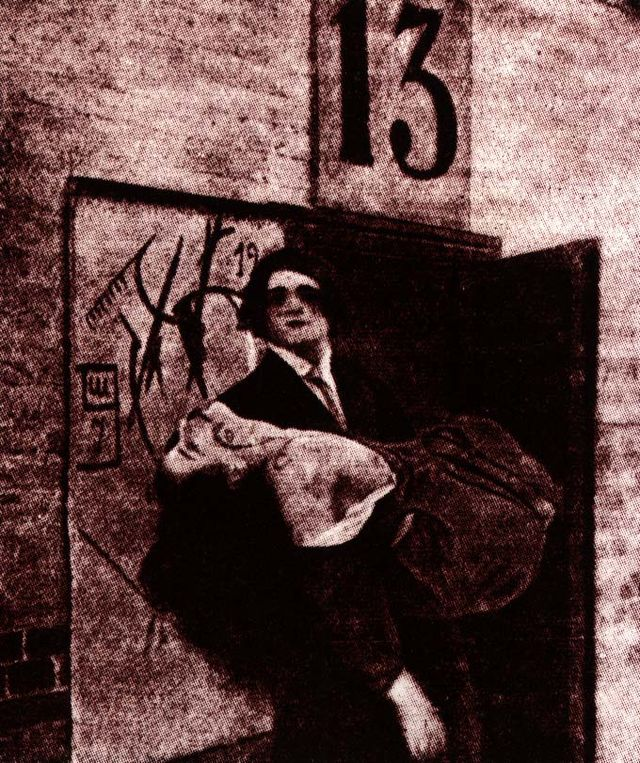
Still from Drama in Cabaret #13, Larionov & Goncharova, 1914
Still from Drama in Cabaret #13 Significance
Focus on performance between the couple
“Bringing art to the people” (mostly unsuccessful)
Use of costume and makeup for theatrics

The Evangelists, Goncharova, 1910-11
The Evangelists Significance
Censored at the Donkey’s Tail exhibition
Inspired by the average proletariat
Mix of rebellious art style and religious subject matter was controversial
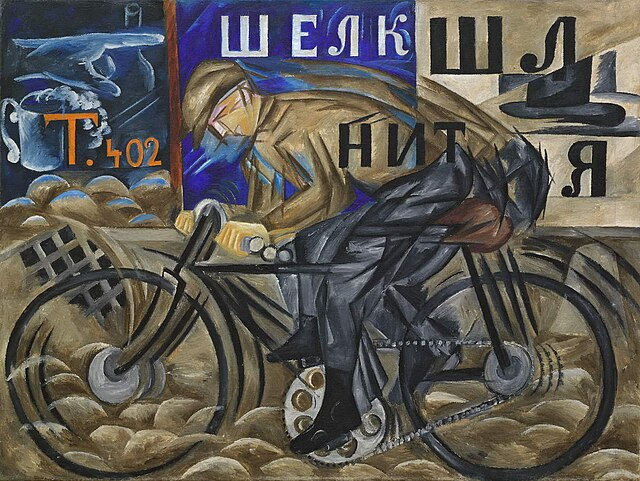
The Cyclist, Goncharova, 1912
The Cyclist Significance
Fusion of cubism and futurism (cubo-futurism)
“Speed” of futurism and methods of synthetic cubism
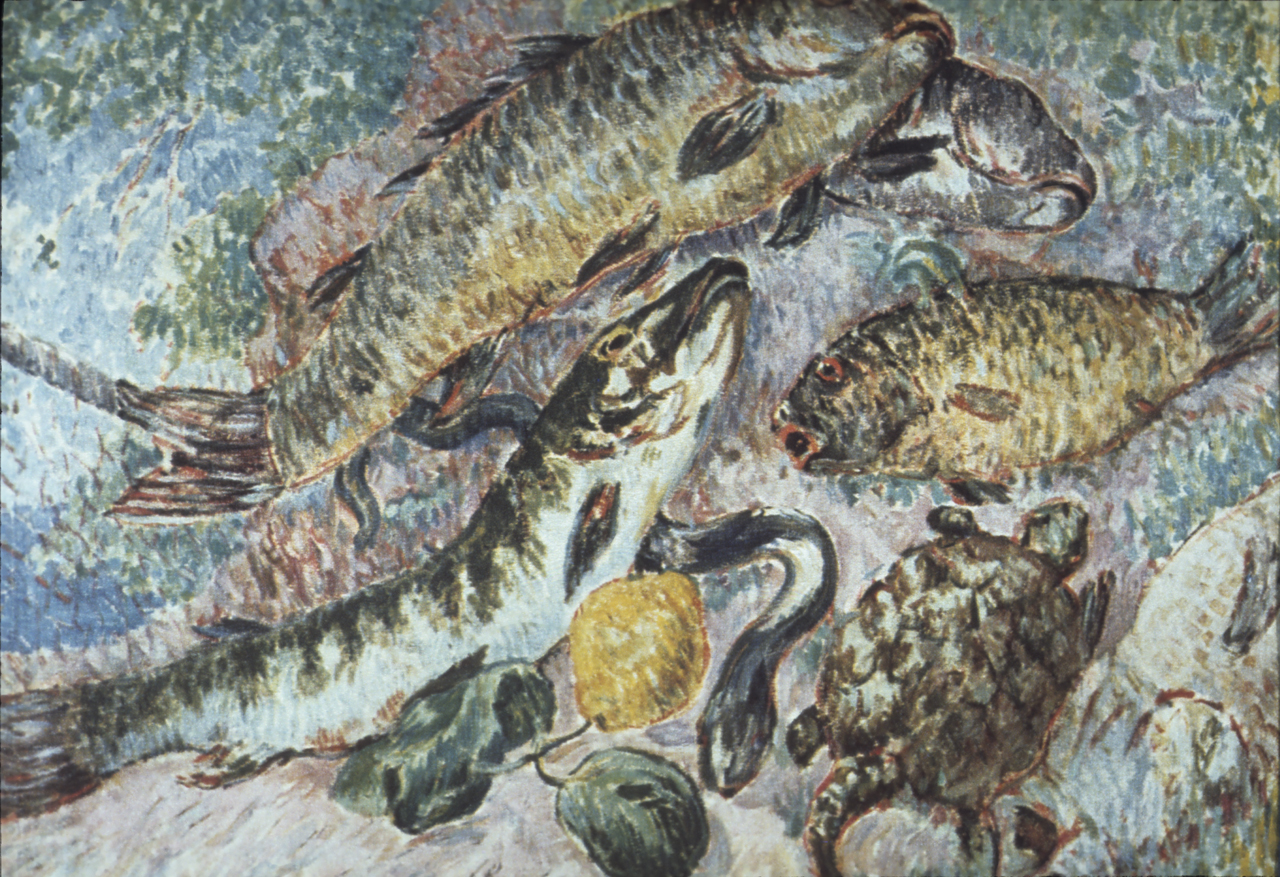
Fishes, Larionov, 1906
Fishes Significance
Influence of impressionism
Use of pinks/pastels (will later be dropped for muted palette)
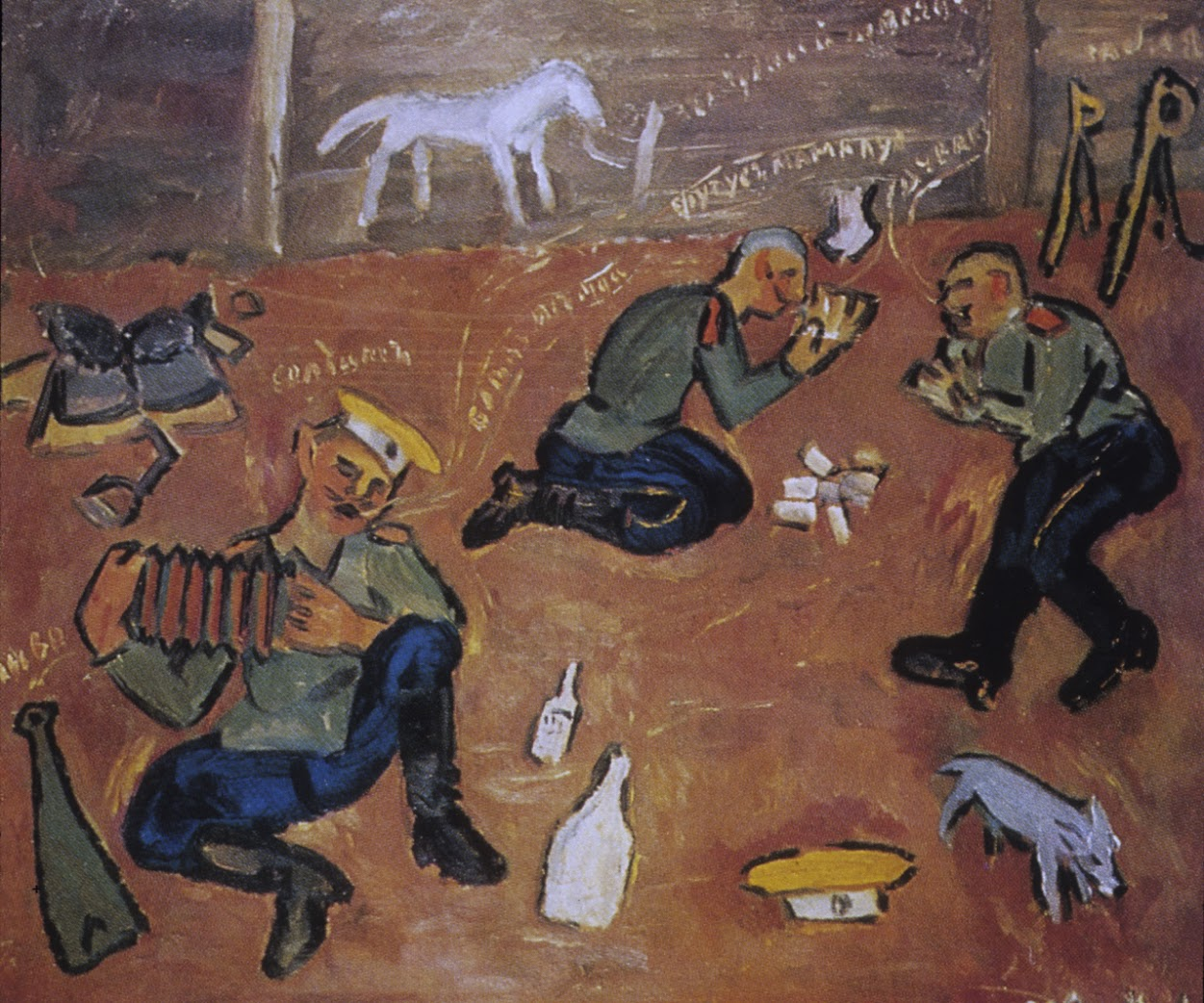
Soliders II, Larionov, 1909
Soldiers II Significance
Influence of primitivism (horse…)
Muted color palette showing Goncharova’s influence
Mixture of image and text
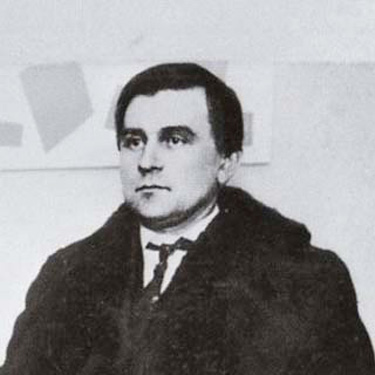
Kazimir Malevich
Impoverished and mostly self-educated
Obsession with the “cosmos”
Founder of Suprematism (pure painting)
HATED Tatlin
Unovis
Malevich’s teaching method/artist group
Focus on “pure painting'“ and suprematism
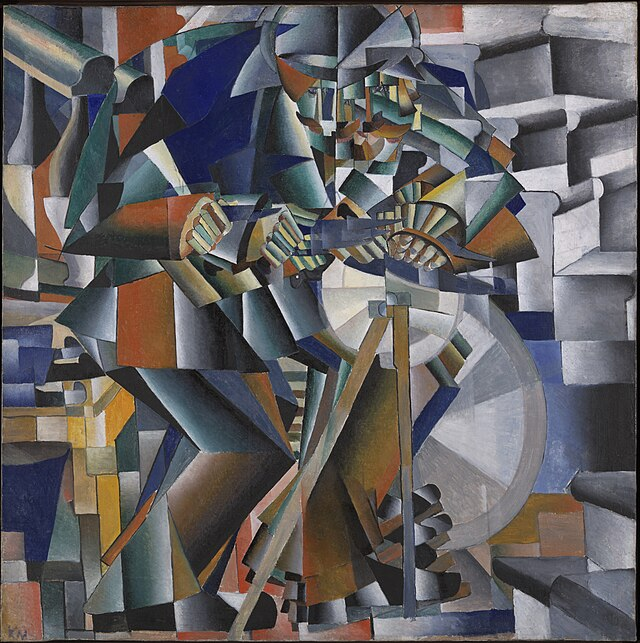
The Knife-Grinder, Malevich, 1912
The Knife-Grinder Significance
Example of cubo-futurism (cubism + futurism)
Depicts a member of the proletariat (working class)
pre-Suprematism
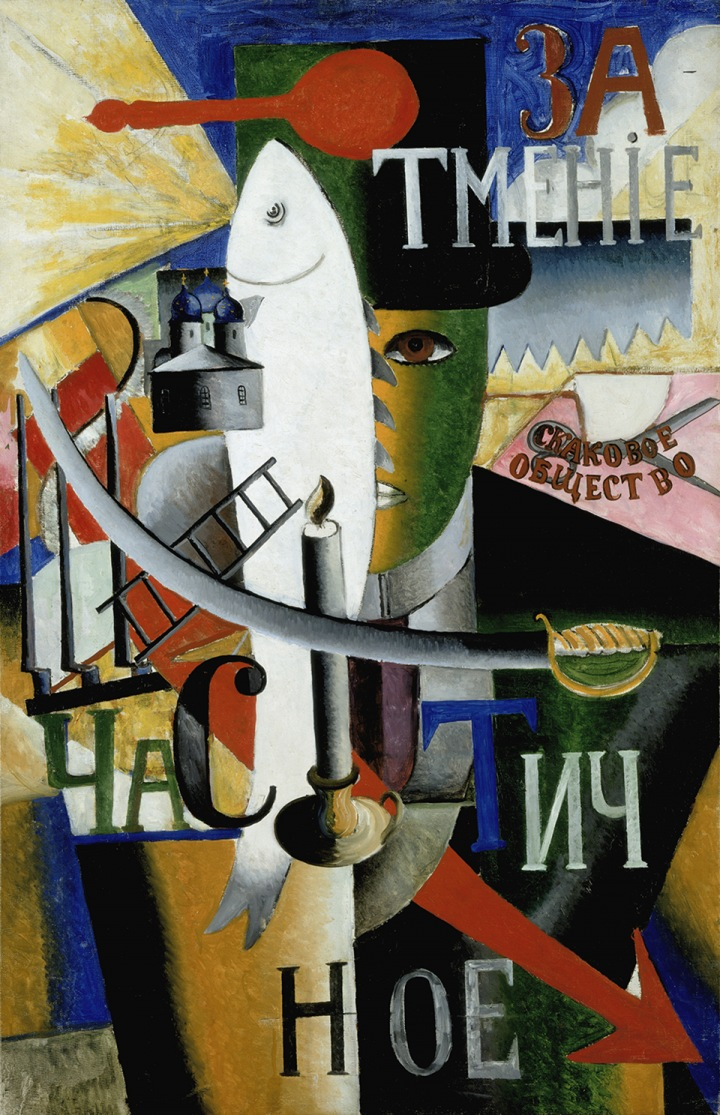
An Englishman in Moscow, Malevich, 1913
An Englishman in Moscow Significance
Continued influence of synthetic cubism
pre-Suprematism
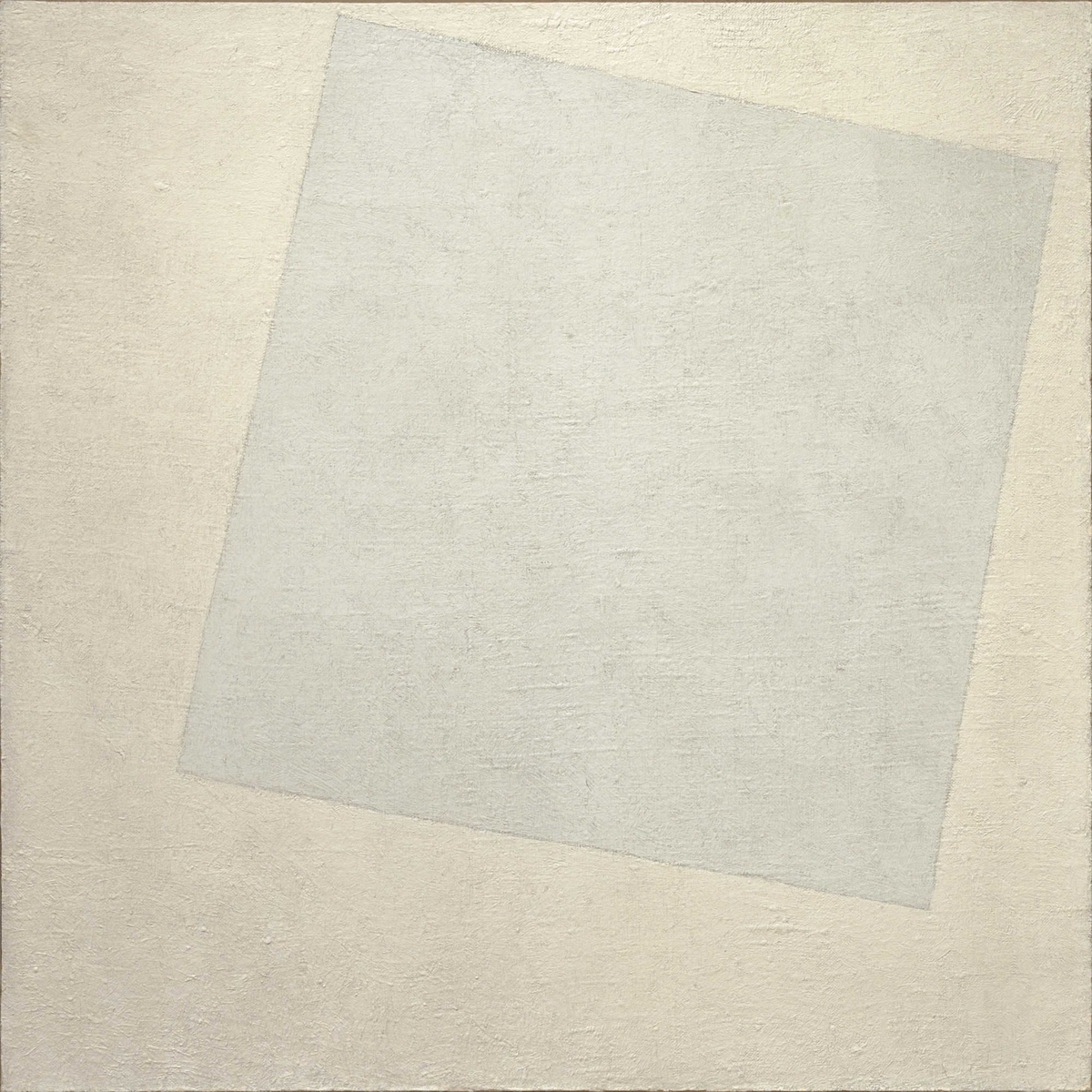
Suprematist Painting: White on White. Malevich, 1918
Suprematist Painting: White on White Significance
The act of “pure” painting (suprematism)
Breaking down painting to its bare essentials
Visuals over function
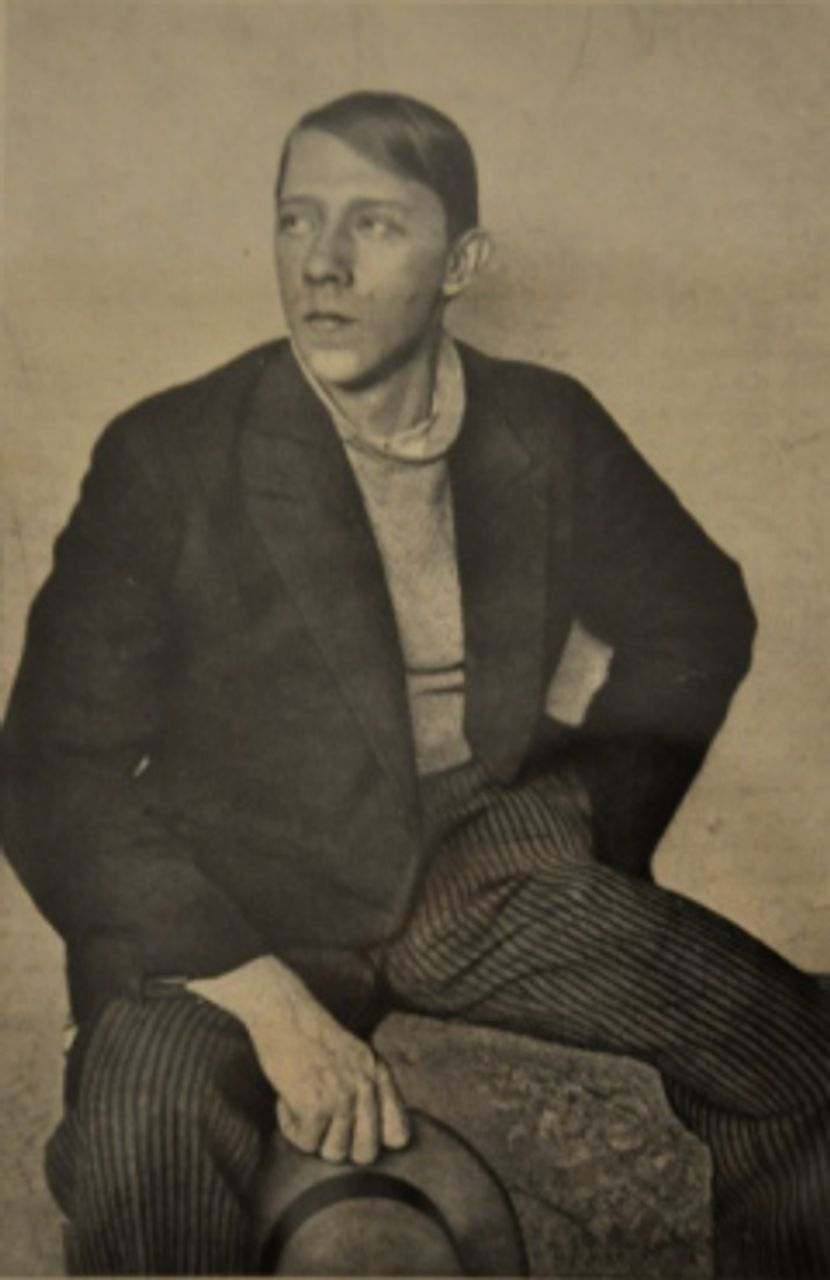
Vladimir Tatlin
Founder of Constructivism
Did NOT get along with Malevich
Function over form
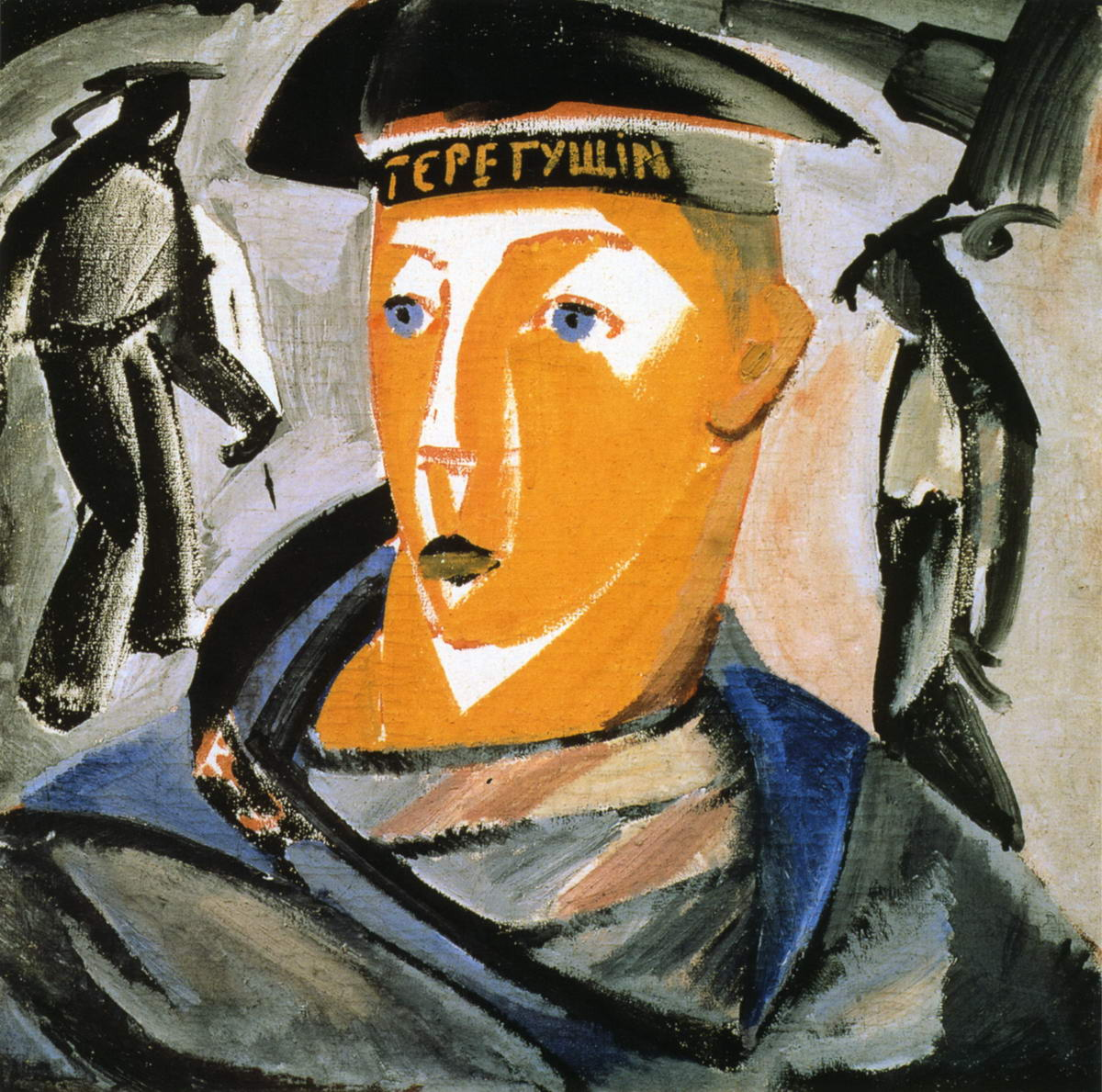
The Sailor, Tatlin, 1911
The Sailor Significance
Inspired by Tatlin’s time as a sailor
Shows an early interest in mixed media

Monument to the Third International, Tatlin, 1919-20
Monument to the Third International Significance
State-sponsored propaganda
Never fully created, only idealized
If built, would be Empire State Building height
Ideally built of glass and steel, spinning constantly
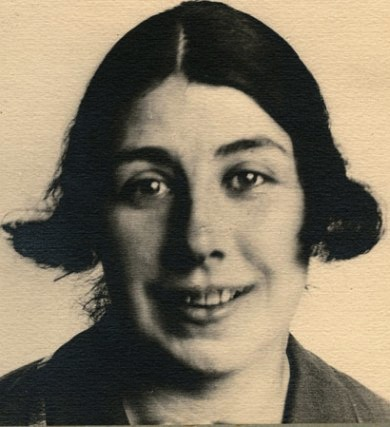
Lyubov Popova
Originally trained as a teacher
Worked for IZO NARKOMPROS
Joined the staff of Vkhutemas
Practical application of Constructivism
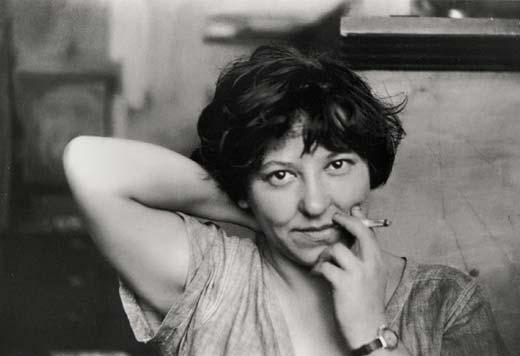
Varvara Stepanova
Trained as a painter before moving to textiles
Artistic partner and wife of Rodchenko
Practical application of Constructivism
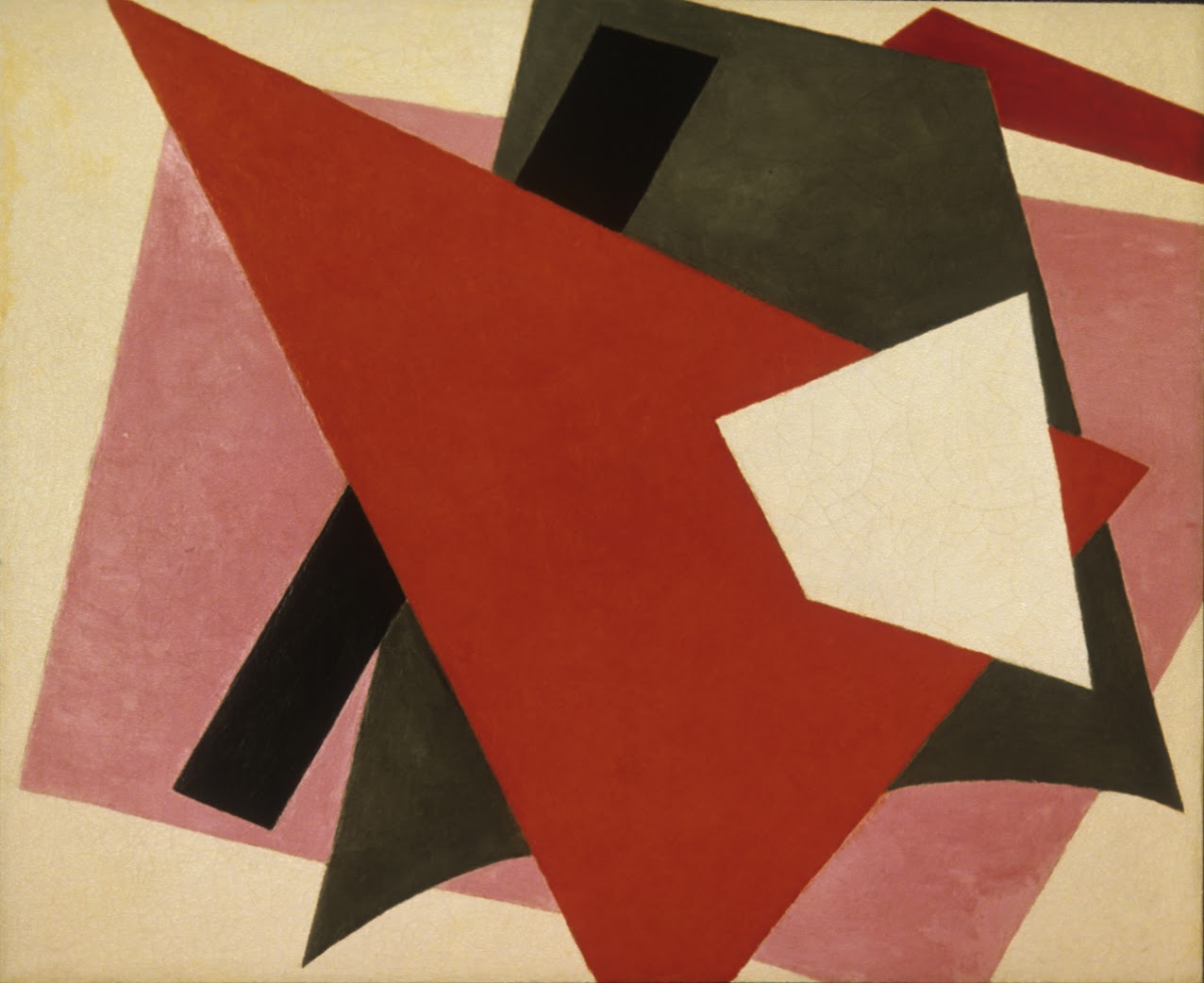
Painterly Architectonic, Popova, 1917
Painterly Architectonic Significance
Application of suprematism
Not yet for the people yet thinking of the people
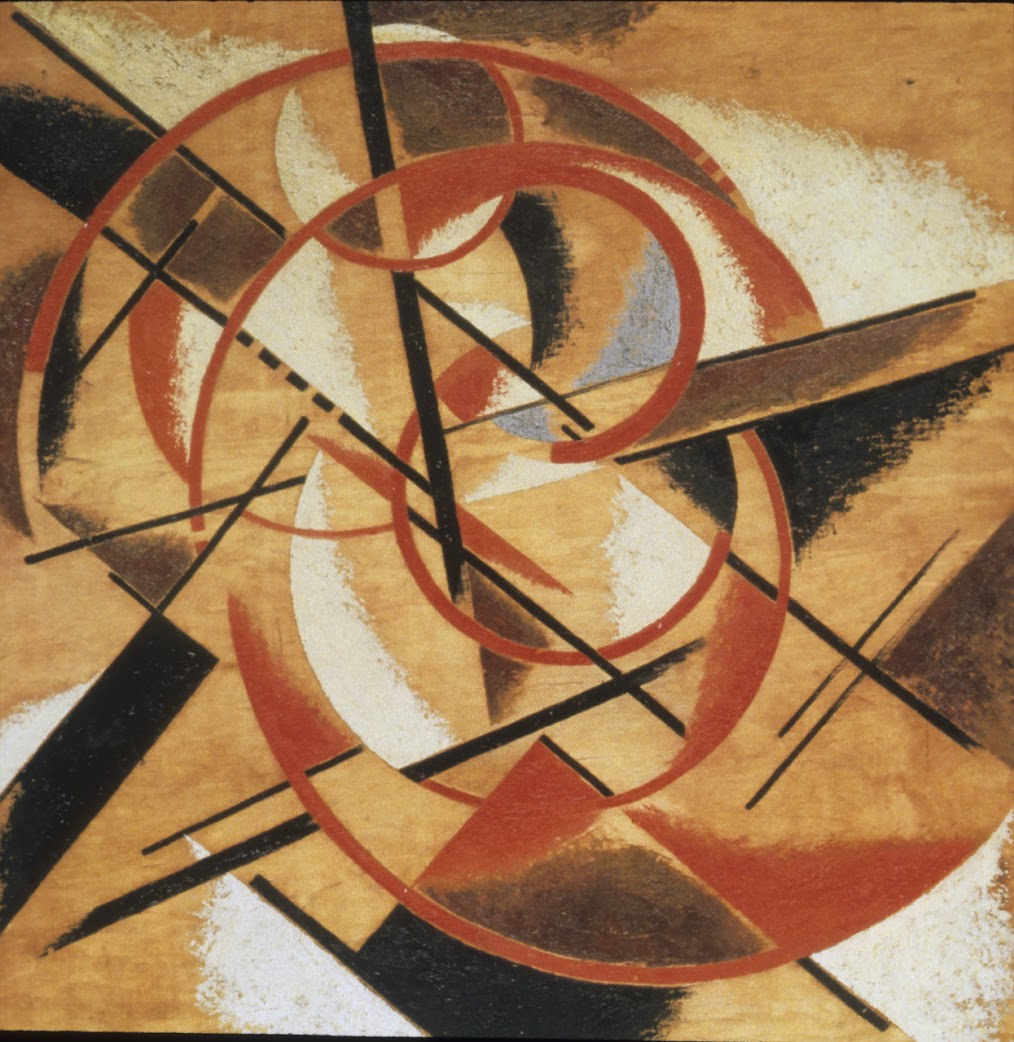
Spatial Force Construction, Popova, 1921
Spatial Force Construction Significance
Continued application of suprematism
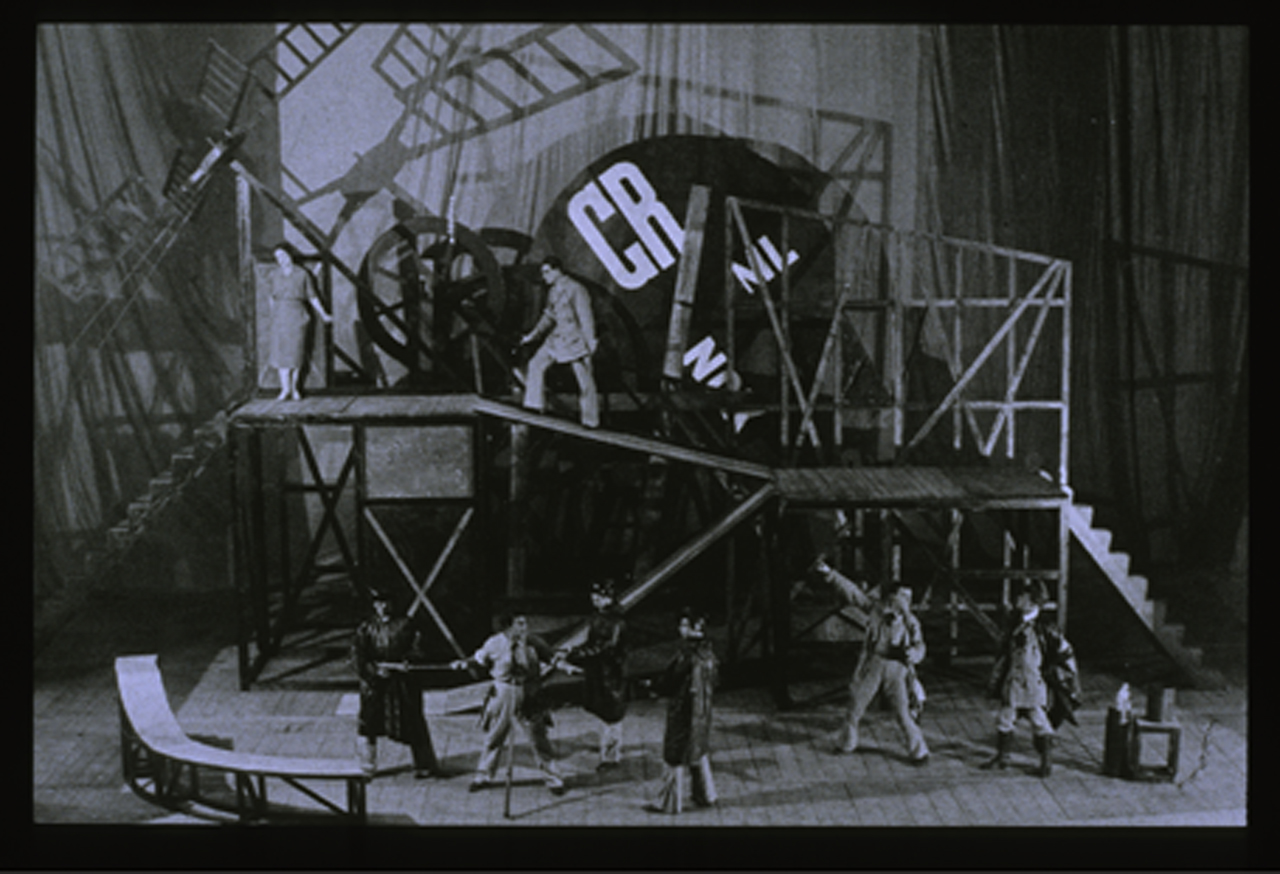
Design for The Magnanimous Cuckold, Popova, 1922
Design for The Magnanimous Cuckold
Influence of Constructivism on set and fashion design
Stage as the perfect setting for application of Constructivist ideas
Shift away from gendered clothing
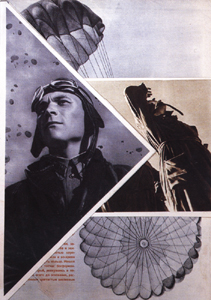
Layout for USSR Under Construction, Rodchenko and Stepanova, 1931
“Layout for USSR Under Construction” Significance
Pro-Stalin propaganda magazine
Sold for $5 and intended for wealthier/foreign readers
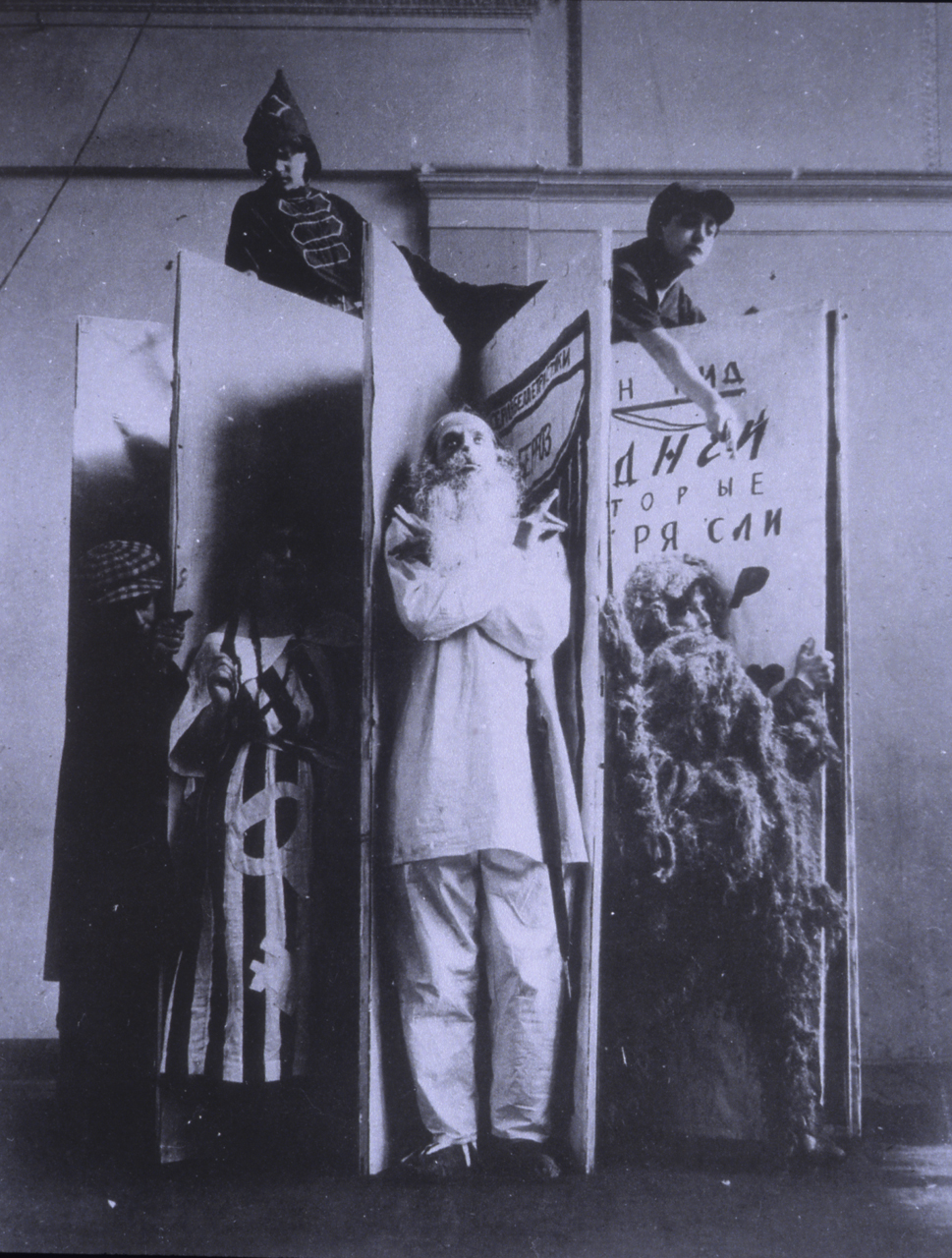
Design for An Evening of the Book, Stepanova, 1924
“Design for An Evening of the Book” Significance
Continued use of the stage as a space for Constructivist ideas
Sports uniforms clad with letters
Comparing pre and post revolutionary literature
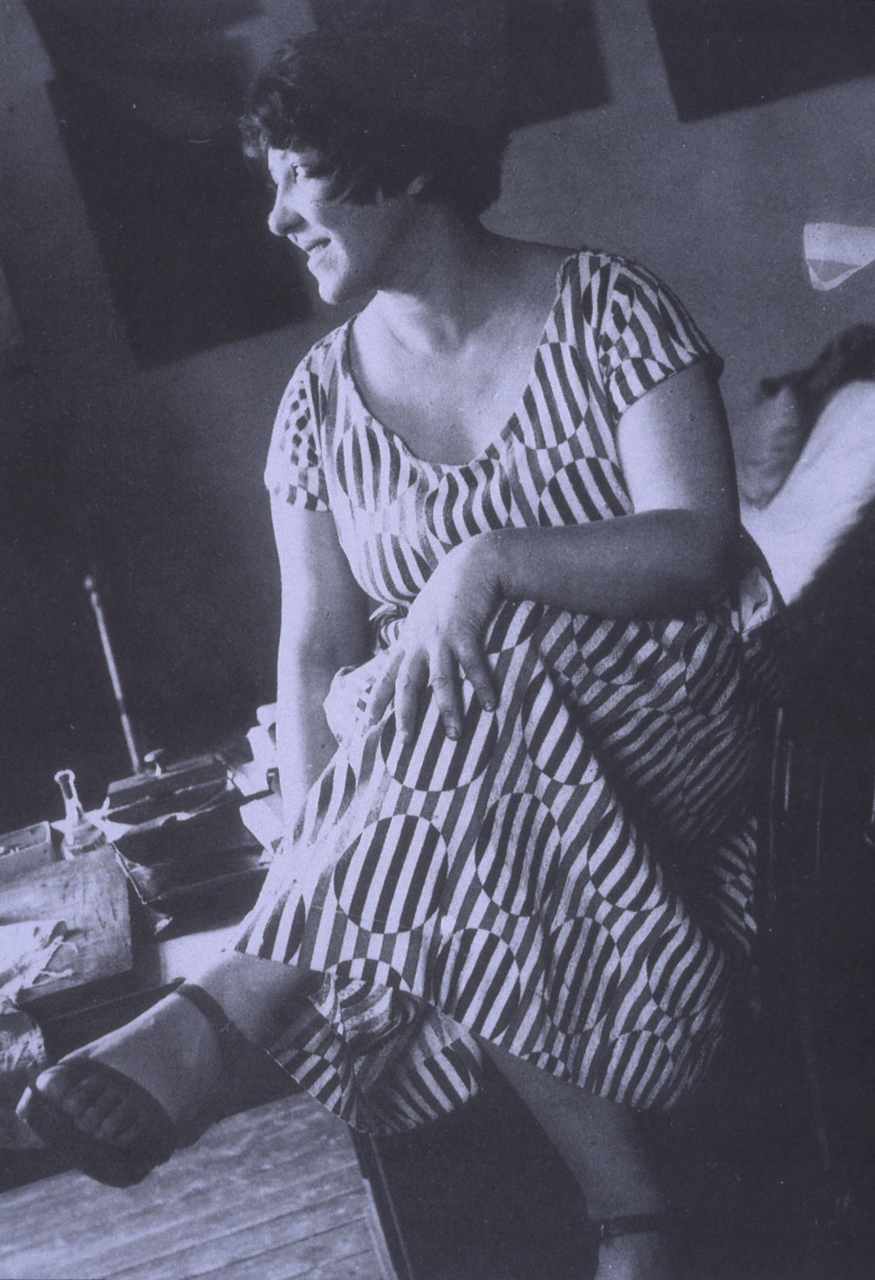
Constructivist Dress, Stepanova, 1924
“Constructivist Dress” Significance
“Blowing up” past references
Liberates the body from constriction
Influence of sport/game attire
NOT popular among non-artists
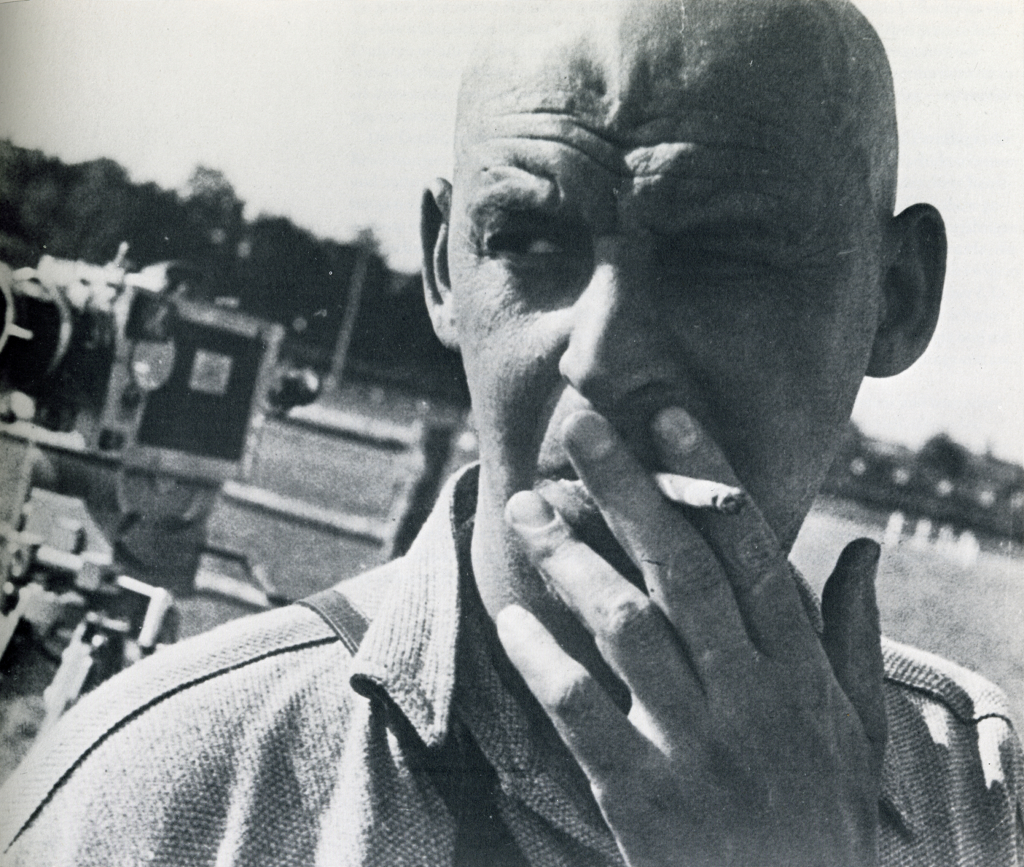
Alexander Rodchenko
Trained as a painter before becoming a graphic designer/photographer
Artistic partner and husband of Varvara Stepanova
Known for adjunct-prop
Love for counter-objects
Counter-objects
Response to Tatlin’s objects
Not concerned with appearance, more focused on function
RATIONAL!

Compass and Ruler Drawing, Rodchenko, 1915
“Compass and Ruler Drawing” Significance
“The future of making is not with the hand of an artist but with the straight edge of a compass”
Mechanical exploration
Shown at The Store Exhibition
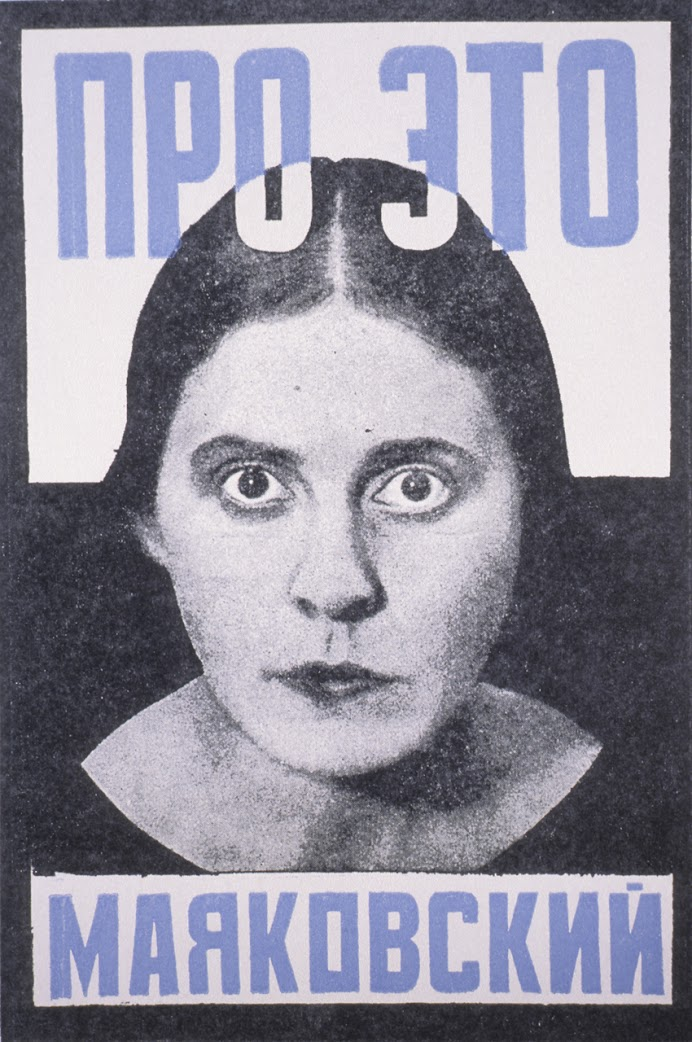
Cover for Mayakovsky's About This, Rodchenko, 1923
“Cover for Mayakovsky's About This” Significance
Use of photomontage
Functional cover for literature
Integration of art and everyday experience
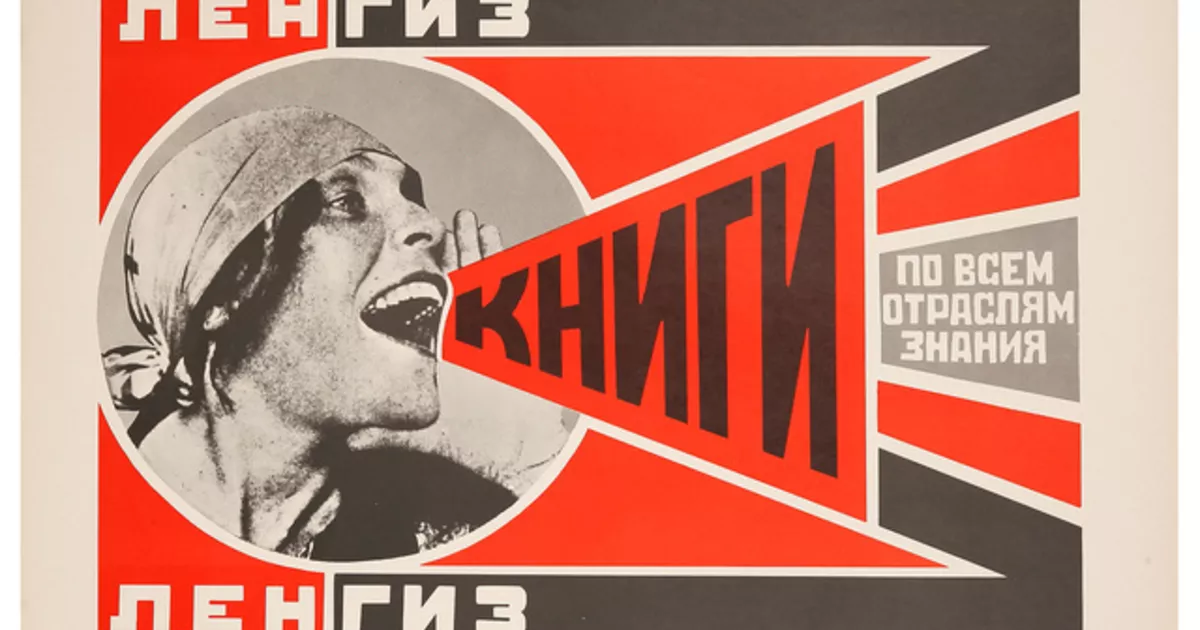
Literacy Poster, Rodchenko, 1924
“Literacy Poster” Significance
Promotion of literacy via adjunct-prop
Activation through color, graphics and text
Contains Rodchenko’s signature
Paid for by a state publishing house (Leningrad GIZ)
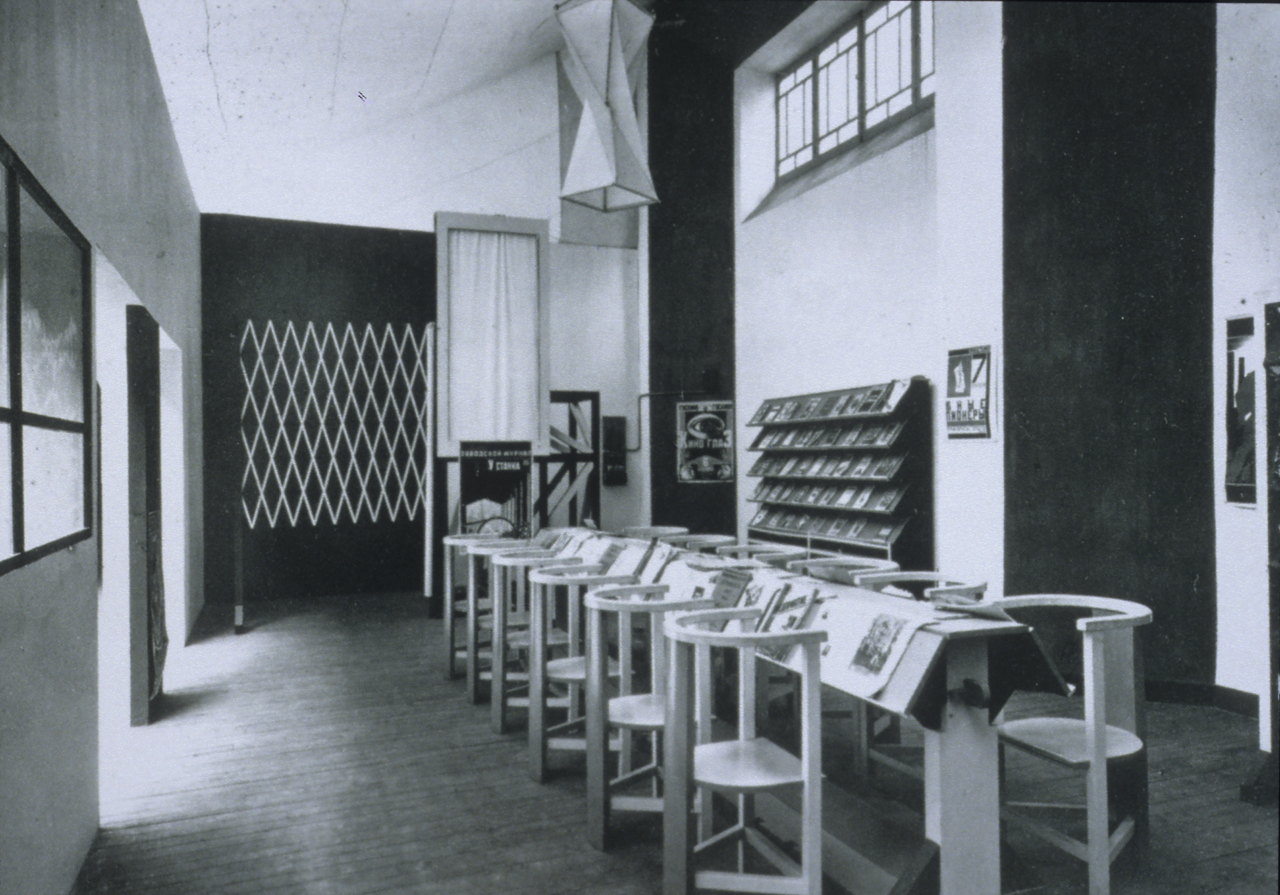
Workers' Club at the Paris Expo Soviet Pavilion, Rodchenko, 1925
“Workers' Club at the Paris Expo Soviet Pavilion” Significance
Functional artist working space
Featured a range of Constructivist design
Temporary space usually built in tent structures
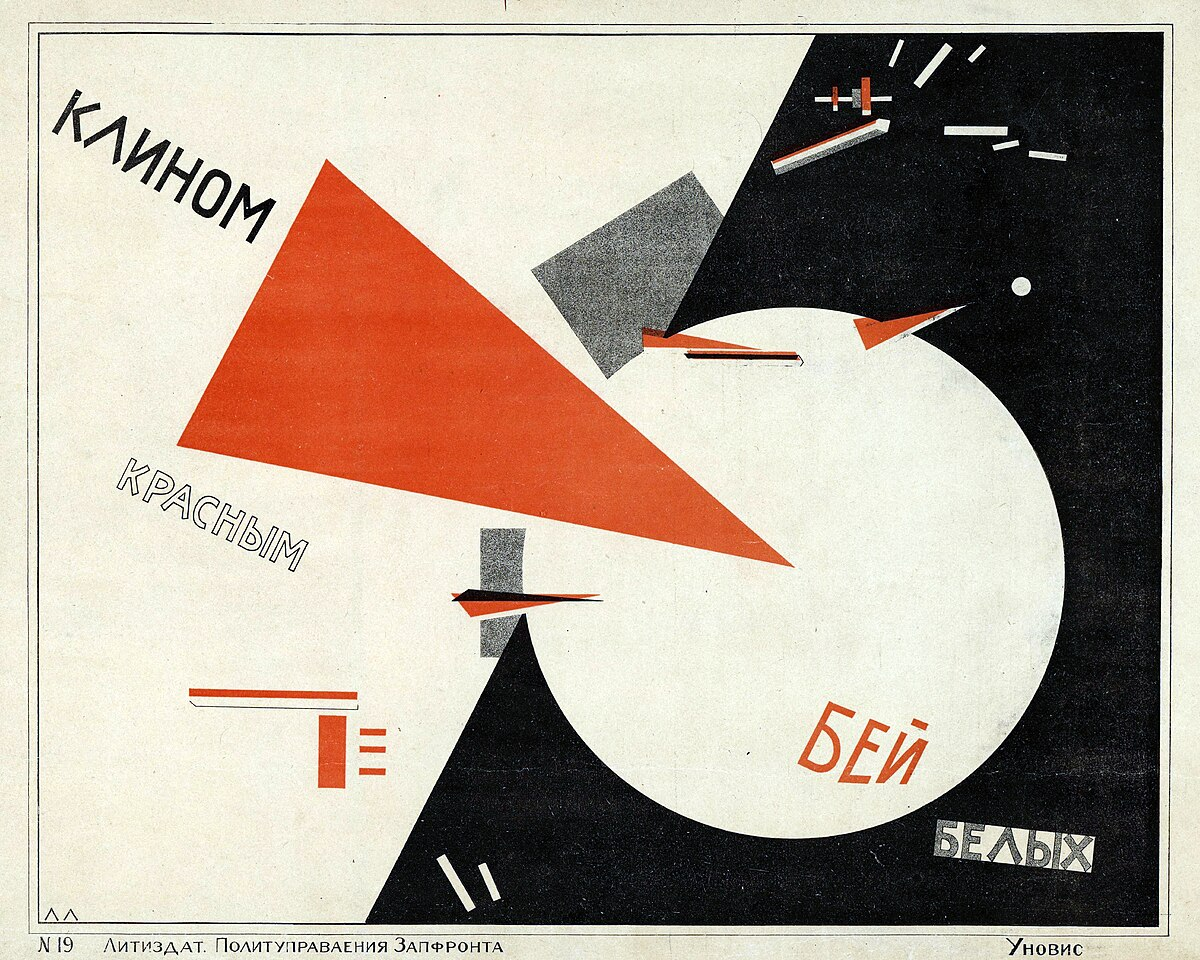
Beat the Whites with the Red Wedge, Lissitzky, 1920
“Beat the Whites with the Red Wedge” Significance
Commissioned by IZO NARKOMPROS
Adjunct-prop
Symbolizes communist (red) vs anti-communist (white)
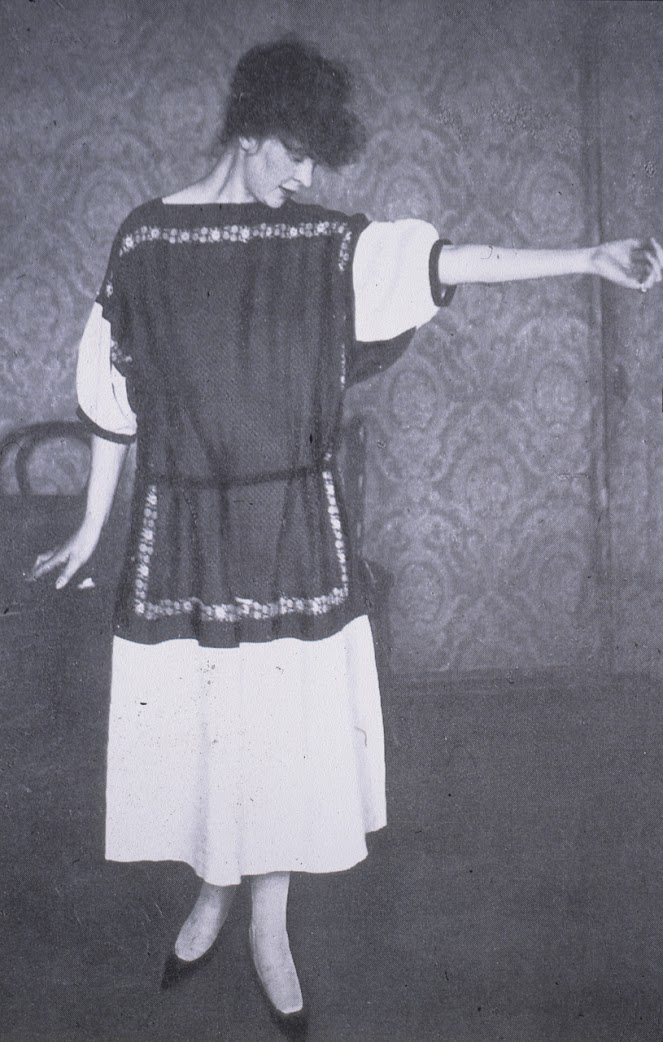
Embroidered Folk-dress, Lamanova, 1923
“Embroidered Folk-dress” Significance
“Mining” slavic history
Using traditional embroidery techniques
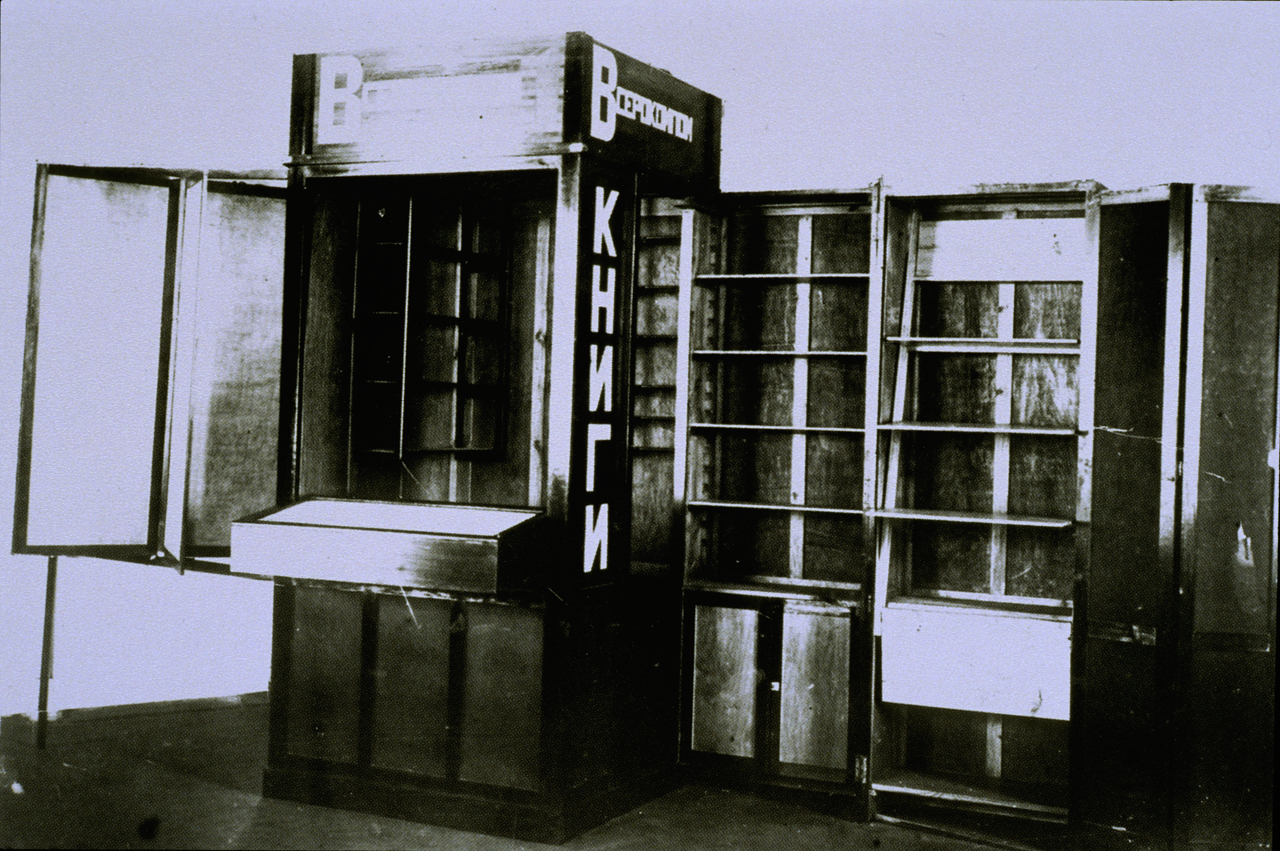
Book Kiosk, Gan, 1923
“Book Kiosk” Significance
Breakdown of art to its pure function
Poor translation into the real world (only prototypes)
Intended to increase literacy and provide literature to the proletariat
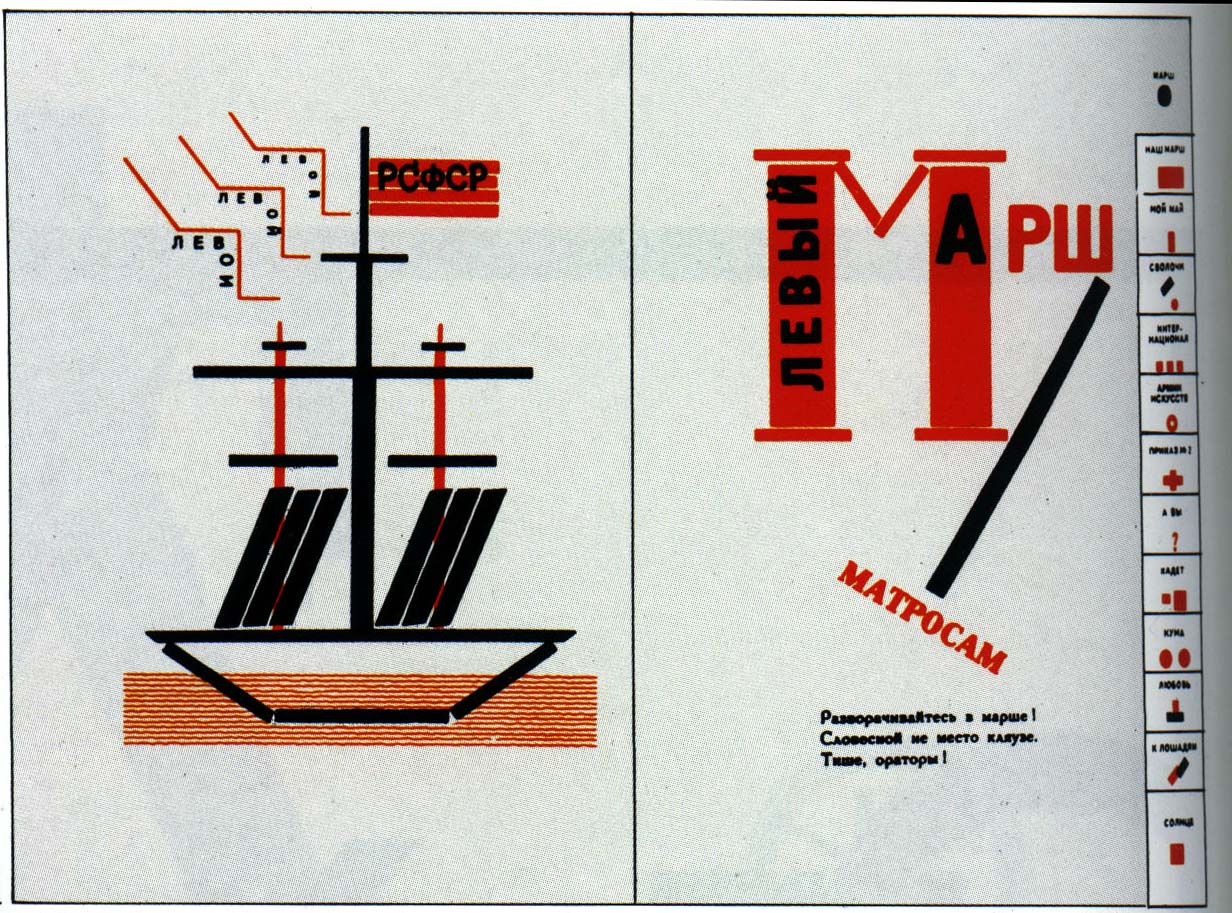
Mayakovsky’s For the Voice, Lissitzky, 1923
“Mayakovsky’s For the Voice” Significance
Collaboration between artist and poet
Call to arms for artists in the revolution
Constructivist application for art
Futurism Manifesto
Written by Marinetti
Romanization of war/violence
Focus on speed/future
INCREDIBLY misogynistic
Will be read by Russian artists and semi-adopted
Museums as “mausoleums of dead ideas”
A Slap in the Face of Public Tastes
Manifesto of Russian futurists
Focus on urbanization/technology
Moving on from past Russian tradition
“Self-sufficient-word”
Foundation of cubo-futurism
Rayonists and Futurists Manifesto
Written by Goncharova and Larionov
Art functioning with life
Branching out to the ideas of futurism while ignoring ego/bigotry
Use of light rays/refraction as focal point
Concerning the Spiritual in Art
Written by Kandinsky
Importance of intuition in art-making
Abandon the need for literal representation and embrace abstraction
Reliance on inner feelings and spiritual connection
From Cubism and Futurism to Suprematism
Written by Malevich
Emphasis on “pure” painting
Art as lacking function with pure
Complete separation from nature and realism
KOMFUT: Program Declaration
“Communist” approaches to life and art
Futurism-communism mixture
The Initiative Individual in the Creativity of the Collective
Written by Tatlin
The individual as a catalyst for collective creation
Collective energy over individual brilliance
UNOVIS Program
Focus on cubism, suprematism and futurism
Setup for teaching avant-garde art
Spearheaded by Malevich
Inkhuk Program
Written by Kandinsky
Foundation of how “foundational” art programs function (ex. KCAI)
Research-based/the science of art
Statement
Written by Popova
Constructivist/Suprematist approach to the basics of art
The Monument to the Third International
Written by Punin
Description of the piece and its socio-cultural artistic meaning
Application of constructivist and communist ideas in art
Program of the First Working Group of Constructivists
Written by Rodchenko/Stepanova
Manufacturing OVER artistic satisfaction
Tectonics - Relationship between ideological and formal
Faktura - Material
From Constructivism
Written by Gan
Tectonics - Relationship between ideological and formal
Faktura - Material
Construction - Main function of art
From Picture to Calico-Print
Written by Brik
Moving from “artistic” art to “production” art
Death of painting
October “Declaration”
Separation from existing art groups
Focus on the interests of the working class over the creation of new art
The Work of Art in the Age of Mechanical Reproduction
Written by Benjamin
Production of art is pro-capitalism
Aura of art comes from authenticity
Photomontage as a New Problem in Agit Art
Written by Klucis
Structure/steps of the photomontage
political slogan, photograph of social act/event, color (for activation), graphic elements, planar/perspectival design
government commission, theme/content development, structural development, taking of relevant photos, process of montage/organization
MOST IMPORTANT IS EMPHASIZE CLASS
Whom is LEF alerting?
Written by LEF Collective
Encouraging collective art over individualism
Left-leaning ideas of art
Call to arms of the various artist groups
Do not simply create art, embody the spirit of art
Literature and Revolution
Written by Trotsky
Arguing against the LEF
Art must be conducted not just embodied
Do not deny experience and livelihood for the sake of communal art
Declaration
Written by AKhRR
Shift towards socialist realism
True depictions of the proletariat
Classless society through heroic realism
Realism and the avant-garde
Written by Wood
Describes the shift from avant-garde to realism
Struggles to make the “right” revolutionary art
References Suprematism and Constructivism as main struggles in this creation